VUMC FAQs
OK, let’s just admit here at the beginning that some of these questions aren’t exactly frequently asked.
But asking them (and answering them) here has a purpose.
That purpose is about something that is sometimes called “institutional memory.” It’s that set of facts, tales and beliefs that defines any collection of people. The collective memory that holds a group of people together, that encapsulates a core of knowledge that members of the group have.
Lore: Families have it, sports teams have it, companies have it, and universities and medical centers have it.
So, of course, Vanderbilt University Medical Center has its lore, its facts, its institutional tales, its weird stuff that people who have been around a long time just know. But unless you are the kind of person who spends lunch hour in the library looking up exactly who Commodore Vanderbilt was or what chicken embryos and milk shakes have to do with the history of Vanderbilt, this information has existed mainly as oral history, passed from employee to employee over lunch or during a break when there’s a little time to talk.
Some of the items in this conceptual attic are good and some are bad, but, taken together, they paint a picture of who we, the staff, faculty, students and volunteers of Vanderbilt are, where we came from and maybe give a road sign or two about where we’re going.
Some of it is historical. Some of it is hysterical. Some of it is just plain weird. And it all happened here. And remember: those who do not know history are destined to look like saps when everybody else is slinging around references to “The Flexner Report.”
Who was the Commodore?
Cornelius Vanderbilt (1794-1877) was born to a poor family on Staten Island, N.Y. When he died, he was worth about $100 million and was the richest man in the country. He made his money through, first, shipping (which is where he got the nickname “Commodore”), and then railroads. He wasn’t much known for giving his money away, but he did pony up a gift of $1 million to help found what became Vanderbilt University. Before his gift, it was known as Central University.
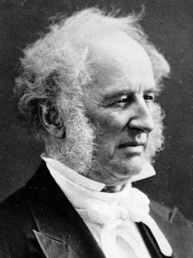
There had been plans in place to found a Methodist-affiliated college in Nashville since the 1850s, but those plans were postponed by the Civil War. Following the war, the effort was led by Methodist Bishop H. N. McTyeire. Pity the development officer (or whatever the money-raisers were called then) venturing forth in the devastated postwar Southern economy trying to raise funds for a school. Family connections came to the rescue. Early in 1873, Bishop McTyeire visited Cornelius Vanderbilt and his wife in New York. Mrs. Vanderbilt was a second cousin to the bishop’s wife. As a result of this visit, and following prolonged discussions, Commodore Vanderbilt offered a half million dollars (followed soon by a second payment of a matching amount) with stipulations that the new university be located in or near Nashville, and that the bishop be president of the Board of Trust. Vanderbilt said he had a vision of a place that would “contribute to strengthening the ties that should exist between all sections of our common country” when he gave $1 million to create a university in 1873. He didn’t need to point out to people of that time that the ties that “should exist” had been pretty hard to come by in recent years, what with that secession thing and all. Still, his wish that the university help pull all sections of the country together has lately been much more in evidence, with a substantial part of Vanderbilt’s student body originating from other regions of the U.S.
Cornelius Vanderbilt never visited the university that bears his name.
Vanderbilt was handing out medical degrees barely a year after its founding. How’d it do that?
In 1874, even before the opening of Vanderbilt University, an agreement was made with the proprietary Medical Department of the University of Nashville in which Vanderbilt University and the University of Nashville would share the same medical faculty. During this time, the School of Medicine was owned and operated as a private property of the practicing physicians who made up the faculty and received the fees of the students—a system that, while not ideal, was typical of medical education in the U.S. at the time. For the first years of its existence, Vanderbilt’s medical school and hospital were located near the present day intersection of Fifth Avenue and Elm Street, near downtown Nashville. In those first years, students had the option to matriculate in either school and receive the M.D. degree from one or the other, or both, for an extra fee. Because of this option, and the students who exercised it, Vanderbilt Medical School graduated its first class in 1875—an excellent trick for a school that barely existed a year earlier.
Was the football field really named after a medical dean?
Medical education in the late 19th Century was a considerably less formal enterprise than today. In fact, raising the professionalism of the graduates of the School of Medicine was a major goal of a reorganization begun in 1895. William L. Dudley (of Dudley Field fame), professor of Chemistry in the College of Arts and Science, was appointed medical dean; admission requirements were raised to require a high school diploma; the course was lengthened to three years of six months each; and laboratory work in the basic sciences was added to the curriculum. Three years later, in 1898, the quality of education was again upgraded; the course requirement for graduation increased from three years to four years; and the number of months of instruction each year increased from six to seven.
How did the Flexner Report change everything?
Abraham Flexner was a Kentucky high school teacher and principal who wrote an influential 1910 report, funded by the Carnegie Foundation, that argued that medical education should be more rigorous and scientific and that schools of medicine should be affiliated with colleges and universities. Among the medical schools in Tennessee at the time, Flexner found Vanderbilt to be the one that was closest to the goals set out in the report. Using the Flexner report as a guideline, Vanderbilt, with money from the Carnegie Foundation and a gift of $4 million from John D. Rockefeller Sr., set about creating a “modern” medical school.
What were they thinking when they built Medical Center North?
They were thinking: Now this is a snappy building.
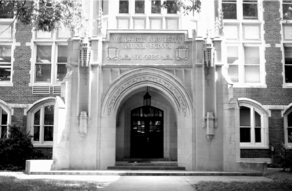
Around 1920, the idea surfaced that rather than renovate the medical school on the south campus, perhaps it would be wiser to build a new facility on the west campus. Chancellor Kirkland agreed and selected G. Canby Robinson, M.D., a graduate of Johns Hopkins, to be dean and professor of Medicine. Robinson’s plan, innovative for the time, included construction of a single structure, which would house the Medical School, the hospital and research laboratories all under one roof. That building, which opened in 1925, and its additions, are what we now call Medical Center North. (Of course, for most of its existence, for all practical purposes it was the Medical Center).
Medical Center North was built with a tic-tac-toe board design that had two north-south hallways and two east-west hallways, and open courtyards in between to provide all rooms with light and ventilation. The simple design of the building was modified over the years, with additional construction adding new corridors or wings every 10 years or so, through 1972, when the Joe and Howard Werthan Building was added on the front. After the opening of the new hospital in 1980, no new construction was added to Medical Center North until after the turn of the century, when an animal care facility and the Imaging Center were added to the building. Also, Medical Research Building III, which opened in 2002, is connected to Medical Center North, but is considered a building in its own right.
Important question: Have any distinguished faculty members also been circus performers?
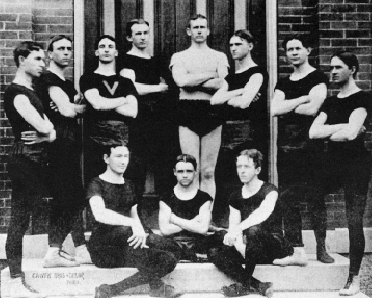
James Tayloe Gwathmey, M.D., was a leading anesthesiologist in the U.S. in the early 20th Century, and was arguably the first shining light on the national stage who graduated from the Vanderbilt School of Medicine. In his spare time, he was a circus acrobat. Gwathmey earned his medical degree in 1899, and in 1914, after practicing medicine for years in New York City, wrote Anesthesia, the first complete text on the subject to be published in the U.S., and for years the standard work in the specialty.
But it’s worth noting that Gwathmey was also the author of a standard work on acrobatics called Tumbling for Amateurs, and, before attending medical school, had actually dropped out of Virginia Military Institute to join a circus as part of a traveling acrobatic troupe.
It would be a pleasure to report at this point that some current medical faculty are also circus performers, but we appear, sadly, to have no acrobats, freaks, bearded ladies or trapeze artists among us.
Didn’t I see a movie one time about the Vanderbilt researchers who pioneered “blue baby” surgery?
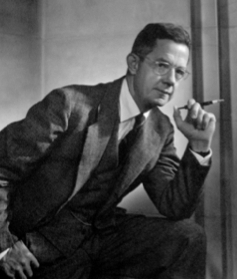 Alfred Blalock, M.D., was a surgeon, and Vivien Thomas was a research assistant in surgery. Thomas was African-American and due to the racism of the time, was ineligible to be a student or faculty member at Vanderbilt in the 1930s. Despite these barriers, Blalock and Thomas worked as partners in conducting pioneering research leading to the first cardiothoracic surgery for infants born with “blue baby syndrome.” The work was essential to the development of open heart surgery. Blalock and Thomas later jointly moved to Johns Hopkins.
Alfred Blalock, M.D., was a surgeon, and Vivien Thomas was a research assistant in surgery. Thomas was African-American and due to the racism of the time, was ineligible to be a student or faculty member at Vanderbilt in the 1930s. Despite these barriers, Blalock and Thomas worked as partners in conducting pioneering research leading to the first cardiothoracic surgery for infants born with “blue baby syndrome.” The work was essential to the development of open heart surgery. Blalock and Thomas later jointly moved to Johns Hopkins.
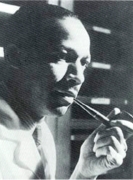
Their story was turned into the movie Something the Lord Made, which was shown on HBO in 2004 and starred Alan Rickman (best known for playing Severus Snape in the Harry Potter movies) and rapper Mos Def.
How did a Vanderbilt researcher use chick embryos to save lives?
The method of culturing vaccines against viruses in chick embryos was developed at VUMC in the 1940s by Ernest Goodpasture, M.D., who became dean of the School of Medicine in 1944. Goodpasture’s method allowed the mass production of vaccines for smallpox, typhus and yellow fever, and therefore saved lives all over the world.
Was modern neonatal intensive care invented at Vanderbilt?
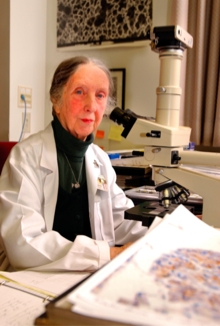
Patient care of newborns was revolutionized in 1961 at VUMC as Mildred T. Stahlman, M.D., founded the Division of Neonatology and began the Vanderbilt NICU, the first in the nation to make use of respiratory therapy for infants with damaged lungs. “It was an exciting time for everybody,” Stahlman remembered, “but it was also very hazardous; nobody knew what the outcome would be.”
Where was Children’s Hospital before the Monroe Carell Jr. Children’s Hospital at Vanderbilt was built?
Vanderbilt Children’s Hospital was founded in 1970 under the leadership of David Karzon, M.D., known as “The Father of Children’s Hospital.” It was housed on the third floor of Medical Center North, then moved to the “new” Vanderbilt University Hospital when that facility opened in 1980, occupying the fourth, fifth and part of the sixth floor. The Monroe Carell Jr. Children’s Hospital at Vanderbilt opened in 2004.
What did Earl Sutherland win the Nobel Prize for?
Vanderbilt’s first Nobel Prize for Medicine or Physiology came in 1971 when Earl W. Sutherland Jr., M.D., received the prize for his discovery of cyclic adenosine monophosphate (cyclic AMP). Cyclic AMP is important because it occurs as an intermediate in the process of converting glycogen to glucose in the liver, and when he discovered it, Sutherland theorized that it acts as what he called a “second messenger,” carrying instructions from the first messenger, a hormone, into the cells. That insight still forms the basis of the way scientists describe how hormones work in the body.
What did Stanley Cohen win the Nobel Prize for?
Stanley Cohen, Ph.D., shared the 1986 Nobel Prize for Medicine or Physiology with Rita Levi-Montalcini, Ph.D., for their discovery of epidermal growth factor, a hormone that can speed up certain biological processes. Cohen had noticed that when he injected salivary gland extract into newborn mice, their eyes opened faster than they otherwise would. In other words, something was speeding up a natural process. That something was epidermal growth factor, and Cohen’s work laid the foundation for the study of growth factors and the mechanisms regulating the growth and survival of cells—information that is of critical importance to understanding cancer.
Where is Sugar Hill? And how did it get that name?
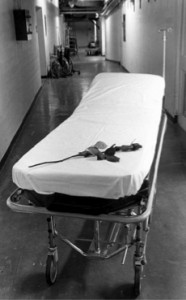
It’s a concrete-floored ramp-slanted basement hallway in Medical Center North—D-0200 if you want to go find it for yourself. But here’s the thing— nobody has ever called this the D-0200 corridor. This hallway was once universally known as Sugar Hill.
When Medical Center North was both the hospital and the site of the School of Medicine, there were a lot of young medical students, young nurses, and young residents who spent many long nights in this building. This hallway was built on the slant, out of the way, dimly lighted, and was used as a storage area for wheelchairs and gurneys.
Well, that was its official use. If you get my drift, and I think you do.
Is it true that the School of Nursing was not part of the Medical Center for most of its history?
For most of its history, the School of Nursing was an undergraduate school of the College of Arts and Science. It was only in 1984, the same year that Colleen Conway-Welch, Ph.D., became dean of the school, that Nursing became an official part of the Medical Center, despite the obvious fact that Vanderbilt nurses had been a vital part of VUMC since the school was founded in 1909. At that time it was a national leader in nursing education and was one of the first programs to incorporate its curriculum into a liberal arts degree. In 1989, the school completed a phase-out of its undergraduate training program and became a graduate school. One of the innovative programs of the school is the Bridge program, which admits students from educational backgrounds other than nursing and allows them to complete a course of work leading to an advanced practice nursing degree. The School of Nursing has also added a course of study leading to a Ph.D. in Nursing Science, and combined with the School of Engineering to offer an M.S.N. in Nursing and a Ph.D. in Biomedical Engineering.
A TV movie about a homicidal maniac doctor was filmed at VUMC? Really?
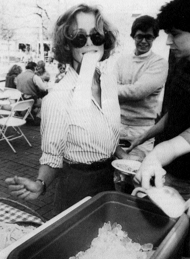
In the winter of 1983, VUMC was stalked by a killer. Luckily, this particular killerwas fictitious, as Medical Center North was used as a shooting location for the TV movie “The Cradle Will Fall,” which starred Lauren Hutton, Ben Murphy, James Farentino and William H. Macy. The plot revolved around Hutton’s character, an assistant district attorney investigating the apparent suicide of a woman. It turns out that the death was not a suicide, but…MUUUUUUURDER. And, wouldn’t you know it, the chief suspect is the physician (Farentino) who is treating Hutton when she is hospitalized after a car accident.
Medical Center North was being renovated, but parts of the building still pretty much looked like an old hospital, which is what it had been until three years before. So it was a perfect set for this spooky movie, based on the novel by Mary Higgins Clark.
The movie first aired on CBS the night of May 24, 1983, and is available on Netflix.
Was a patient really brought to the ED impaled on a wooden fence post?
The Vanderbilt Emergency Department, like any urban Level 1 trauma center, sees its share of noteworthy events, tragedies and sometimes even comedies. But there was a case that came through the ED in the early summer of 1986 that people still talk about. The patient’s name was Mike Harper, a 15-year-old from Mt. Juliet, Tenn.
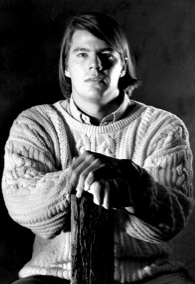
On that just-out-of-school summer night, Mike was riding around with his friend, Chad, who was 16 and had been given the keys to his family’s Audi 5000. On a deserted two-lane country road, the boys got an idea: let’s see if we can get this car to 100 miles per hour.
Bad idea. Even worse execution. Chad lost control of the car and it spun into a row of fenceposts, backward. One of the fence posts came through the floor of the car, through the back of the passenger side car seat, and…through Mike. All the way through. He was impaled on a six-inch thick fencepost.
Amazingly, he was conscious and in no pain. But he was scared. He had lifted up his T-shirt and had seen his skin folded under where the post came through, and he had also heard the concerned tones of the paramedics who came to the wreck site. The paramedics called LifeFlight and Mike was loaded into the helicopter with the post still protruding from his body. His parents were told that Mike likely had massive internal injuries and that he might not survive the necessary surgery to remove the post.
But there were virtually no internal injuries. As the post penetrated his body at an estimated 60 miles per hour, the organs simply rolled aside and made room. Had the post been slightly to the left, Mike would have had a gaping wound to his side and bled to death. Slightly to the right would have meant likely fatal internal injuries.
Mike went home one week later, and before the summer was over was playing baseball, leaving his story behind as the trump card on quiet nights when ED people play “can you top this?”
How many Presidents and Vice Presidents have visited VUMC?
The first sitting president to visit VUMC was Bill Clinton, who, along with Vice President Al Gore, was here in 1995 to visit Gore’s mother, Pauline, who was hospitalized at the time. Clinton and Gore arrived outside Langford Auditorium and made their way through throngs of well-wishers on their way to Mrs. Gore’s room in Vanderbilt Hospital.

The visits from presidents to VUMC have come pretty regularly since. Clinton returned in 1996 for one of his last stops at that year’s election campaign. He spoke to a packed house in Langford Auditorium.
Clinton and Gore, along with first lady Hillary Clinton and Tipper Gore, were in Langford Auditorium again in 1998 to participate in Gore’s then-annual Family Re-Union conference.
And President George W. Bush visited Monroe Carell Jr. Children’s Hospital at Vanderbilt in 2004 to discuss technology in health care. And yes, as part of the event he, too, took to the stage in Langford Auditorium.
And while he didn’t specifically visit the Medical Center, President John F. Kennedy spoke at Dudley Field in May 1963. Langford Auditorium hadn’t been built yet.
A fake beard? Really?
On the hot afternoon of Aug. 22, 1995, what happened in the parking garage across from VUH ignited a bizarre series of events that wound through federal courts for more than seven years.
On that day, a nurse phoned Vanderbilt Police and reported a man in a strange disguise was lurking around the garage. When an officer responded, he immediately spotted the man, who was decked out in an obvious wig, an Abe Lincoln-style fake beard, and, most ridiculously out of place on a Nashville August afternoon, a large trenchcoat. He also wore padding around his waist, to make himself appear heftier.
The officer detained the man on trespassing charges, and asked for some ID. He was given a British West Indies drivers license issued in the name of Steven Maupin.
But the man was not named Steven Maupin. His real named turned out to be Ray Mettetal Jr., M.D., and he was a former resident at VUMC. In his possession was an enormous, veterinary-style syringe with a four-inch needle filled with a boric acid solution, as well as a map of the Vanderbilt campus, diagrams of the garage, notes on garbage pickup schedules in Belle Meade, and a photograph of a Belle Meade house that had, until just a few months before Mettetal’s arrest, belonged to George Allen, M.D., chair of Neurosurgery at VUMC and Mettetal’s former boss.
As police developed their case, they discovered from interviews with both Vanderbilt sources and Mettetal’s family and friends that the former resident had an apparent grudge against Allen. The theory that Mettetal was stalking his former boss with intent to do him harm was strengthened by searches of his house and a storage locker in his new home of Harrisonburg, Va., where he had vials of poisons and reading material such as “The Complete How-to-Kill Book” and “Silent Death.”
The irony is that Mettetal would likely have been completely inconspicuous in scrubs or street clothes had he not ineptly tried to fool everybody with his clownish getup.
The case was transferred to Virginia for trial, since federal charges of possessing poison for use as a weapon were considered a stronger case by prosecutors and Mettetal’s attorney desired that his client be tried in a federal court rather than a state court, as he would have been if charged in Nashville.
He was convicted in 1998, but the case was overturned on appeal. Mettetal was retried in 2001, and again convicted. But for a second time, the conviction was overturned. In October 2002, the federal appeal judges ruled that the arrest of Mettetal for trespassing—which led to the discovery of the syringe and fake ID, which led to the search warrants for his Virginia property where the poison was stored—was improper, and therefore the evidence couldn’t be used.
Mettetal, who served more than five years in prison on these charges that were later overturned, is a free man.
Was a Vanderbilt medical student born on a Medical Center North elevator?
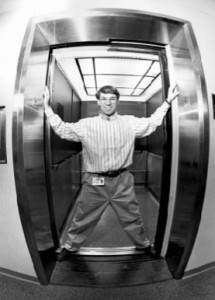
The elevator designated MCN 1, now primarily used as the quickest way to get to and from the Post Office in the basement of Medical Center North, was the site of one of the most unusual births ever recorded at Vanderbilt Hospital.
When Medical Center North was the home of Vanderbilt Hospital, the current location of the Post Office was the Emergency Room, and elevator MCN 1 was the connector to the upper patient wards and rooms, including Labor and Delivery, on the fourth floor.
The date was Sept. 17, 1971, and Barbara Viner and her husband, Vanderbilt medical graduate and resident Nick Viner, M.D., had rushed to the hospital because Barbara was in labor. The young couple hurried into the ER and Barbara was immediately helped onto a gurney and wheeled to the elevator for the ride to the fourth floor.
Then things started happening fast. Too fast.
“All I remember is, they said, ‘He’s coming’ and ‘There he is’—and I was still on the elevator,” Barbara remembered later. Their baby boy was born in the elevator. Barbara and Nick named their newborn son, Dan (it’s not recorded whether they considered Otis).
Twenty-three years later, in 1994, Dan Viner followed in the footsteps of his father and came to medical school at Vanderbilt. Before he came for his interview, his mom had some advice for him: “When you get on the elevator, look up—you may recognize it.”
When was smoking banned from Medical Center buildings?
Smoking was officially banned from all Medical Center buildings on Jan. 1, 1989. Smoking had gone from an activity common in offices and patient rooms, to a restricted activity only in “smoking areas,” finally to outright prohibition. The ban was announced months in advance to give employees who smoked a chance to quit—or at least pick out what doorway they would huddle in come January.
Smoking had gone from an activity common in offices and patient rooms, to a restricted activity only in “smoking areas,” finally to outright prohibition. The ban was announced months in advance to give employees who smoked a chance to quit—or at least pick out what doorway they would huddle in come January.
Lots of people who have been shot are brought to the hospital. Has anybody ever been shot inside the hospital?
One of the saddest and most shocking events ever to occur at VUMC happened about 11 p.m. on the night of Jan. 9, 1986. Gunshots shattered the quiet of the Pediatric Intensive Care Unit waiting room, at that time on the fifth floor of VUH, as a local pharmacist named Charles Jones, shot and killed Bobby Gann, a 23-year-old wrecker operator from Hendersonville as Gann slept in a chair.
Jones calmly handed over his .38 to a bystander, other patient family members screamed, nurses came running and did CPR on the victim, but Gann died from the gunshots.
The events that led up to the shooting garnered Jones a lot of sympathy in some quarters. Jones’ grandson, a little boy named Ryan Reed, was in the Pediatric Intensive Care Unit near death, a victim of beating and cigarette burns, and Jones was convinced that Gann, who was his daughter Angela Reed’s boyfriend, had abused the child. The little boy died the next day.
Charles Jones was convicted of voluntary manslaughter and served a short prison sentence.
What is the most unusual thing that ever happened near the Robinson Research Building loading dock? That we know of?
Mary and Steven Faber of Molecular Physiology and Biophysics were married to each other and worked in adjacent labs in Light Hall. Mary was set to have a baby at any time, and when she went into labor, Steven went to get their car to rush Mary to the hospital. But young Daniel Steven Faber had other plans. He was born at 10:58 a.m. Friday, Feb. 26, 1993, in the back seat of his parents’ 1988 Toyota Corolla wagon, which was in the loading dock area behind the building then known as Medical Research Building I, now the Robinson Research Building.
Why did the 1925 Vanderbilt Hospital have open porches along some corridors?
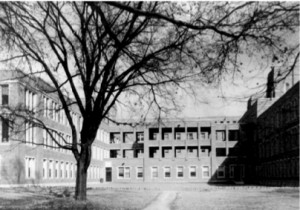
In the original Medical Center North, a porch for tuberculosis patients ran between the B and C corridors on the second floor. Before the invention of antibiotics, there was no cure for TB, but fresh air was thought to be beneficial to the patients, so the original building had a porch adjacent to the TB ward. Above the porch, on the third floor, was a narrow walkway between the B corridor and C corridors. The second floor porch and third floor outdoor walkway were bricked-in in the 1950s, when antibiotics had TB on the wane, but are still visible above the awning of MCN that faces Medical Center Drive. The rows of windows that are the remnants of the old porch are on the second and third floors that cross between corridors above the awning and back about 50 feet.
Rudolph A. Light, M.D., the namesake of Light Hall, was a graduate of the School of Medicine, a professor of Surgery, director of the surgical research library, and a member of the Board of Trust. He was from a well-to-do family that made its money in the pharmaceutical industry, the Upjohn Company, and was here in medical school at the depth of the Great Depression. He knew that many of his classmates were having a hard time having enough money to live on. He wanted to quietly do something to help, so he let it be known that he kept a charge account at a restaurant on 21st Avenue, and allowed any medical student to eat there and charge it to his account. There were several of his classmates who said they might have had to drop out of medical school if it hadn’t been for his generosity at the diner.
Ann Rork Light was a fascinating person, as well. Her father was a Hollywood producer in the days of silent films, and she starred in several movies. It’s probably not quite right to call her a siren of the silent screen, as much as we would like to just be able to say that phrase, but she starred alongside Will Rogers, Douglas Fairbanks Jr. and Walter Pidgeon. Her movie titles included “The Notorious Lady” and “The Blonde Saint.” Another fun fact about Mrs. Light: before her marriage to Light, she was married to billionaire John Paul Getty.
Did people once use the Chapman Quadrangle as a parking lot?
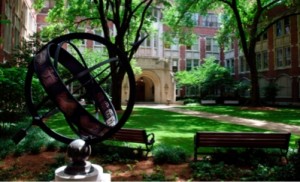
The quadrangle was named in 2001 to honor of John E. Chapman, M.D., who retired that year as Dean of the School of Medicine, and his wife Judy Jean, who taught for many years in the School of Nursing and School of Medicine. This arched gothic doorway is the traditional entrance to the School of Medicine, and there are photographs of the faculty dating back to the 1920s taken in front of this door. This quadrangle was also the site of medical school commencement ceremonies until about 30 years ago.
This area was not always a closed courtyard. The wing of the building opposite the archway, the A.B. Learned Laboratory (now incorporated into Medical Research Building III), was built in 1960, closing off the courtyard. The street grid of Nashville once continued through this part of campus and just beyond the door on the far side of the Quadrangle was a busy street. There is a photograph from the 1940s that shows this area basically being used as a parking lot.
I thought elm trees were killed by Dutch elm disease. Why are there several of them in the Chapman Quadrangle?
The beautiful, stately trees in the Chapman Quadrangle are elms, which were once common all over the Eastern U.S., but most of which were killed in a blight. These are among the few surviving elms of this age in the area, and the legend is that they survived because of the shelter provided by the buildings.
Why did O.R. nurses once brandish fly swatters?
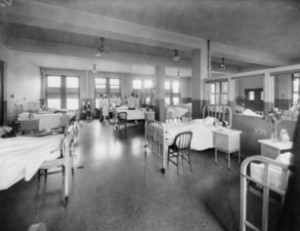
In the 1920s, electric lights were not as bright or efficient as today, and the operating rooms of the original Medical Center North had large windows that helped let in daylight to help the surgeons see. The building was not air conditioned in those days, either, and on hot days the windows would be opened to provide ventilation. Somebody in the OR would be given a fly swatter to keep insect intruders under control. The modern replacements of those extra large windows can be seen from the Chapman Quadrangle by looking above the gothic doorway to the fourth floor.
There seem to be hundreds of Vanderbilt shuttles. Is it true that there used to be only one?
VUMC began running a shuttle between the parking lot off Natchez Trace and Medical Center North in 1984. In contrast to the numerous buses and routes today, things were a little more bootstrap in those early days. There was only one bus, so a rider who wanted to catch it at MCN sometimes needed to page the driver, who would be waiting for riders at the parking lot. There was one memorable winter morning when it was so cold the shuttle wouldn’t start. Longtime driver John Alexander improvised by loading people in his car and driving back and forth until a mechanic could get the bus started.
Have there ever been quintuplets born at VUMC?
On Jan. 20, 1987, the only set of quintuplets in the history of VUMC were born. Within a little more than a day, four of the babies, two girls and two boys, died. The surviving baby, Stephen Hawkins, struggled to live as his parents, James and Darlene Hawkins, dealt with the births of five children, deaths of four children, and the critical condition of their surviving son.
Stephen did indeed survive, and is 25 years old.
What do milk shakes have to do with Langford Auditorium?
L.C. Langford Auditorium is a performance hall and meeting place. It has seen everything from the vice chancellor for Health Affairs’ annual State of the Medical Center addresses to a concert by Elvis Costello and the Attractions.
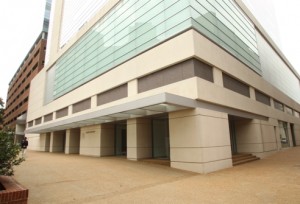
Langford Auditorium could be called “The House that Milk Shakes Built.” Lilburn C. Langford, for whom the auditorium was named, was a businessman from Clarksville, Tenn., who developed a chain of soda fountains and restaurants, some operated under the name Langford’s, and some within drug stores and department stores.
In Nashville in the 1930s, Langford had two restaurants, one downtown and one on Gallatin Road. Both sold various flavors of ice cream, and one day Langford was inspired to take one of the most popular, a mixture of chocolate and malt, and sell a softened version of it in a glass instead of in a bowl. Langford’s culinary innovation—the malted milk—caught on nationwide, and without those milkshakes, there might not be a Langford Auditorium. At its peak, Langford’s company operated more than 100 restaurants. He sold his company to Del Monte in 1969, and after his death in 1977 his widow, Elizabeth Michaud Langford made a substantial donation toward the construction of the auditorium.
What was newsworthy about nutritional research done at Vanderbilt in the 1940s?
In the 1940s the study of human nutrition was one of the strongest areas of research at VUMC. Nutrition in pregnant women was especially a problem in the rural South. Vanderbilt nutrition researchers, with funding from, among others, the Rockefeller Foundation, the Nutrition Foundation, the state of Tennessee, and others, designed a study to examine how much iron pregnant women need by tracing the absorption of the mineral with an isotope. Other similar nutrition research was being done at the same time.
The study was completed, published in a medical journal, and the University sent out a press release about it which was published in Nashville newspapers.
In 1969, researchers from Vanderbilt went back and did a retrospective on the original studies, and this study was also published in the medical literature.
In 1993, the U.S. Department of Energy began releasing records of various studies performed during the same era as the Vanderbilt nutrition studies. Some of the studies were ethically dubious, and the nutrition studies were lumped in the public mind with some of these other studies.
The Vanderbilt studies were called “secret Cold War” studies even though they had been covered in the professional and lay press and had nothing to do with Communists and everything to do with anemia among pregnant women.
While the studies from the 1940s and 1950s were certainly not conducted by the standards of the present day, the work was valuable science seeking to improve people’s lives. After the release of records in 1993, some people claimed harm from the studies and sued the University, some resulting in settlements.
Did a former faculty member become U.S. Senate Majority Leader?

William Frist, M.D., along with Walter Merrill, M.D., started Vanderbilt’s cardiac transplant program in 1985. The program went on to perform the state’s first heart-lung transplant in 1986, and the state’s first infant heart transplant in 1989.
Frist took a leave of absence from his faculty responsibilities to launch a long-shot effort to unseat incumbent U.S. Sen. James Sasser—an effort which proved successful when Frist defeated Sasser in 1994. He was elected majority leader in 2003 after the Republicans won a majority in the Senate, and chose to leave rather than run for re-election after two terms.
Today, Frist is an adjunct professor of Surgery at Vanderbilt, and spends much of his time focused on global health issues. He also leads mission trips to Africa, and serves on the boards of, among others, the Clinton Bush Haiti Fund and First Lady Michelle Obama’s “Partnership for a Healthy America.”
Who are you again?
The first identification badges with a photograph of the employee were issued in 1982. Before that, a Medical Center ID consisted of a blue plastic badge with the person’s name and job title engraved on it. Before that, the ID system consisted of introducing yourself and asking other people their names.
Is it true that VUMC’s Newman Clinical Research Center was the first in the country?
Elliot Newman, M.D., used grants from the U.S. Public Health Service to do clinical research on several diseases, research that led, in 1960, to the establishment of the federally funded Clinical Research Center which bears Newman’s name—the first such center in the country.
Is it true that Vanderbilt has a large collection of cookbooks?
The Eskind Biomedical Library, in addition to winning numerous architectural awards, houses one of the best collections in the world concerning the history of nutrition, including a trove of historical cookbooks, largely collected by former faculty member Neige Todhunter, Ph.D. Among the items: “Beans: Enjoyable the World Over Grown in Michigan,” “Serve Rice and Shine,” “The Ballet Cook Book,” and “The Bible Cookbook,” which lists chapter and verse for its recipe inspirations.
Is a Level 1 trauma center better than a Level 3 burn center?
VUMC has the only Level 1 trauma center in the region, the only Level 4 neonatal intensive care unit and the only Level 3 burn center. The numbers are confusing, but each of those levels represents the highest in its field.
Who is the voice of Vanderbilt’s voice mail?

The person you hear giving voice mail prompts on the VUMC phone system is named Marsha Graham. She lives in California. She has recorded voice mail messages for phone systems all over the world. The next time you hear “At the tone, please record your message,” think about what she looks like.
How many NCI Comprehensive Cancer Centers are there in Tennessee?
The Vanderbilt-Ingram Cancer Center is the only National Cancer Institute Comprehensive Cancer Center in Tennessee, and is constantly among the best in the annual survey by U.S. News and World Report.
When did the VUMC Reporter and House Organ begin publication?
Both the VUMC Reporter (then known as MedCom), the Medical Center’s newspaper of record, and House Organ, which emphasizes employee news and features, began publication in 1982—meaning both are observing their 30th anniversaries in 2012.
Did VUMC once have its own show on NPR?
“Medically Speaking” was a medical news talk show that was syndicated by National Public Radio from 1983 to 1991. It was originally hosted by VUMC News and Public Affairs director Jack Kennedy, and then, after Kennedy left Vanderbilt, by Wayne Wood. There was also, briefly, a half-hour “Medically Speaking” television series hosted by Kennedy and broadcast on the local PBS affiliate.
What’s that on the roof?

During the pre-air conditioning days, dorms could get pretty hot, making sleeping uncomfortable, if not impossible. Some enterprising nursing student in the 1940s attacked the problem by bringing bedclothes onto the roof of what is now Godchaux Hall, which at that time contained a dormitory for nursing students, and establishing an open air sleeping porch. The practice was reportedly discontinued when it was discovered that the sleepwear-clad (female) students were drawing an appreciative (male) audience from the upper-floor windows of nearby buildings.
What’s the name of that building, anyway?
The building we now know as Godchaux Hall was built in 1925, and it has gone by several different names through its history. For its first few years it was simply called the School of Nursing building, but beginning in 1934 it was called Mary Kirkland Hall, after the wife of Chancellor James Kirkland. The longstanding confusion of having two buildings on campus named “Kirkland Hall” led to a name change in 1958 to Mary Henderson Hall, after Mrs. Kirkland’s maiden name. In 1971, the building was renamed again, after Mary Ragland Godchaux, in recognition and thanks to Mrs. Godchaux, her husband Frank, and their family, who had funded a renovation of the building.
Vanderbilt University Medical Center has Magnet-designated nursing. What does that mean?
A Magnet organization is one that signifies excellence—an excellent working environment in which to deliver excellent patient care. Good things happen within a Magnet culture. And, as the word “Magnet” implies, top notch nurses, physicians, scientists, and other health care professionals are “attracted” to a Magnet culture. High quality and satisfaction supports continued excellence.
Magnet Designation, given by the American Nurses Credentialing Center (American Nurses Association), is the only national award that recognizes nurses as integral team members in influencing positive patient outcomes. Fewer than 400 hospitals in the country are recognized as Magnet organizations. Achieving Magnet Designation meant satisfying a demanding set of criteria that measured the strength and quality of nursing and our interdisciplinary approach to patient care. The clinical work at Vanderbilt Medical Center is centered around the patient/family. Magnet Designation is about all departments that make service to patients possible. The designation is awarded for four years.
A Magnet organization is one:
- Where nursing delivers excellent patient care and nurses have a high level of job satisfaction
- Where there is nursing involvement in data collection and decision-making in patient care delivery
- Where nursing leaders value staff nurses, involve them in shaping research-based nursing practice, and encourage and reward them for advancing in nursing practice
- Where there is open communication between nurses and members of the health care team.
What are some television programs with a VUMC connection?
“Trauma: Life in the E.R.” was a series on the TLC cable network that filmed several episodes at Vanderbilt in 1997. “Maternity Ward,” which was produced by New York Times Television and was also broadcast on TLC came to VUMC in 2001, followed by “Resident Life” in 2003, and “Baby’s First Day,” which began airing in 2011 and is still on TLC.

“Resident Life” even had a theme song, “Am I Awake,” by the band They Might Be Giants, the same group that does the theme songs for “The Daily Show with Jon Stewart” and “The Colbert Report.”
These shows set at Vanderbilt have cumulatively been seen by tens of millions of viewers all over the world.
In addition, former Vanderbilt faculty member, Travis Stork, M.D., is one of the hosts of the daily syndicated TV program “The Doctors,” which followed his appearance on the popular ABC show “The Bachelor.”
And the story from the April 2011 House Organ about the unique spine surgery by Matthew McGirt, M.D., that saved patient Judy Kerns’ life, was fictionalized into a plot on the ABC medical drama “Grey’s Anatomy,” and also featured on “The Doctors.”
What is BioVU, and why is it important?
BioVU is Vanderbilt University Medical Center’s DNA databank, the largest resource of its kind at any single academic medical center in the country. It is a key part of Vanderbilt’s pioneering efforts to “personalize” medicine.
In 2007, the BioVU team began extracting DNA from blood samples of adult patients at Vanderbilt that otherwise would have been discarded. The samples are frozen and stored in tiny vials. Both the samples and their matching electronic medical records are “de-identified,” meaning that all personal information is stripped away to preserve patient privacy. But this allows researchers interested in studying the genetics of particular diseases to withdraw and study the samples of individuals with those diagnoses.
In 2009, BioVU began collecting DNA samples from pediatric patients. As of Jan. 24, 2012, BioVU contained more than 138,000 DNA samples, of which more than 15,000 were from children, according to Dan Roden, M.D., assistant vice chancellor for Personalized Medicine.
BioVU is enabling studies of a wide range of diseases, including Alzheimer’s disease, various forms of cancer, heart disease, kidney disease, diabetes, rheumatoid arthritis and mental illness. One current study is examining genetic factors involved in pain and pain management. Other studies are looking for genetic variations that prevent some patients from responding to certain medications or which may cause adverse drug effects in others.
BioVU is carefully reviewed to ensure it meets ethical standards for research. Individuals can choose not to have their DNA samples included in the databank. Vanderbilt’s “consent-to-treat” form includes a box that allows patients to “opt out” of the program.
How much research funding comes to Vanderbilt faculty?
Research funding coming to Vanderbilt faculty were $587 million last year. About $370 million of that comes from the National Institutes of Health. Even though the NIH budget has remained flat over the past several years, research funds coming into Vanderbilt have continued to rise due to the skill and competitiveness of the faculty.
Can you wow me with some other numbers?
The Medical Center sees more than a million and a half outpatient visits and more than 50,000 hospital admissions in a year. Our Emergency Departments for adults and children are treating more than 200,000 patients a year. Our schools of Medicine and Nursing together are training more than a thousand young women and men. There are more than 16,000 staff, faculty and students who are headquartered at VUMC.
My Health at Vanderbilt is really cool. How long has it been around and how many people use it?
 VUMC’s commitment to bioinformatics, and the use of computer technology to make patient care better, has been a hallmark of the institution for many years. In 2003, that commitment led to the creation of My Health at Vanderbilt, which has developed into a full two-way information portal that allows patients to send messages to their health care providers, get messages back, to schedule appointments, pay bills, check on test results, and find other information.
VUMC’s commitment to bioinformatics, and the use of computer technology to make patient care better, has been a hallmark of the institution for many years. In 2003, that commitment led to the creation of My Health at Vanderbilt, which has developed into a full two-way information portal that allows patients to send messages to their health care providers, get messages back, to schedule appointments, pay bills, check on test results, and find other information.
More than 165,000 patients have signed up to use My Health at Vanderbilt.



Leave a Response